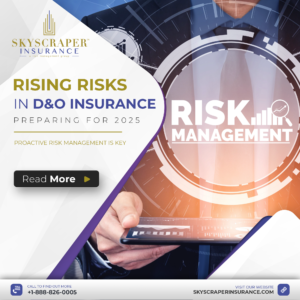Until recently, employers in only a handful of industries had to provide significant reporting on COVID-19 transmission in the workplace. But as of May 26, new Occupational Safety and Health Administration guidelines require a much wider range of employers to determine whether employees caught the coronavirus at work or while performing work-related activities. If so, managers must record the illness on OSHA Form 300.
To comply with OSHA’s new guidance, whenever an employee becomes ill with COVID-19, the employer must conduct a mini-investigation. Some employers are exempt from the new rules, according to OSHA: “Employers with 10 or fewer employees and certain employers in low hazard industries have no recording obligations; they need only report work-related COVID-19 illnesses that result in a fatality or an employee’s in-patient hospitalization, amputation, or loss of an eye.”
All other companies must make a record on the OSHA 300 log if these three criteria are met, according to guidance from the Society for Human Resource Management:
- A confirmed case of COVID-19.
- Work relatedness.
- Illness resulting in death, days away from work, restricted work or the transfer to another job, medical treatment beyond first aid or the loss of consciousness.
Most people who test positive for the novel coronavirus will miss work and meet the third criteria. The hard part for employers is determining whether a positive test is work related. Employers must make reasonable efforts to determine if the exposure is work related.
What efforts are considered reasonable? This can be tricky, but the SHRM has some advice:
- Ask the employee about how he or she believes COVID-19 was contracted. Don’t ask whether family members have contracted it, but if the employee volunteers this information, it could indicate the infection was not work related.
- Ask about the employee’s work and nonwork activities.
- Investigate the employee’s work environment. Have other employees in the same area tested positive? Did the employee’s job duties bring him or her into contact with the public? Were the work areas so crowded that proper social distancing was not practical?
Investigations to answer these questions should be limited or companies risk crossing a privacy line or violating the Americans with Disabilities Act, for example.
Base your conclusion only on information that’s reasonably available at the time you’re investigating. Should you learn more information later that’s related to the employee’s COVID-19 illness, you’ll need to update your recordings of occupational illnesses relevant to your work-related determinations.
Until recently, employers in only a handful of industries had to provide significant reporting on COVID-19 transmission in the workplace. But as of May 26, new Occupational Safety and Health Administration guidelines require a much wider range of employers to determine whether employees caught the coronavirus at work or while performing work-related activities. If so, managers must record the illness on OSHA Form 300.
To comply with OSHA’s new guidance, whenever an employee becomes ill with COVID-19, the employer must conduct a mini-investigation. Some employers are exempt from the new rules, according to OSHA: “Employers with 10 or fewer employees and certain employers in low hazard industries have no recording obligations; they need only report work-related COVID-19 illnesses that result in a fatality or an employee’s in-patient hospitalization, amputation, or loss of an eye.”
All other companies must make a record on the OSHA 300 log if these three criteria are met, according to guidance from the Society for Human Resource Management:
- A confirmed case of COVID-19.
- Work relatedness.
- Illness resulting in death, days away from work, restricted work or the transfer to another job, medical treatment beyond first aid or the loss of consciousness.
Most people who test positive for the novel coronavirus will miss work and meet the third criteria. The hard part for employers is determining whether a positive test is work related. Employers must make reasonable efforts to determine if the exposure is work related.
What efforts are considered reasonable? This can be tricky, but the SHRM has some advice:
- Ask the employee about how he or she believes COVID-19 was contracted. Don’t ask whether family members have contracted it, but if the employee volunteers this information, it could indicate the infection was not work related.
- Ask about the employee’s work and nonwork activities.
- Investigate the employee’s work environment. Have other employees in the same area tested positive? Did the employee’s job duties bring him or her into contact with the public? Were the work areas so crowded that proper social distancing was not practical?
Investigations to answer these questions should be limited or companies risk crossing a privacy line or violating the Americans with Disabilities Act, for example.
Base your conclusion only on information that’s reasonably available at the time you’re investigating. Should you learn more information later that’s related to the employee’s COVID-19 illness, you’ll need to update your recordings of occupational illnesses relevant to your work-related determinations.
OHSA reassures employers concerned about the burden and their liability according to OSHA rules, noting, “Employers, especially small employers, should not be expected to undertake extensive medical inquiries, given employee privacy concerns and most employers’ lack of expertise in this area.” It also says, “Recording a COVID-19 illness does not, of itself, mean that the employer has violated any OSHA standard.” Liability in general remains a confusing and controversial topic, however, along with the issue of how to treat workers who don’t want to return to a workplace, citing safety concerns. Companies should get legal advice before making major decisions.




